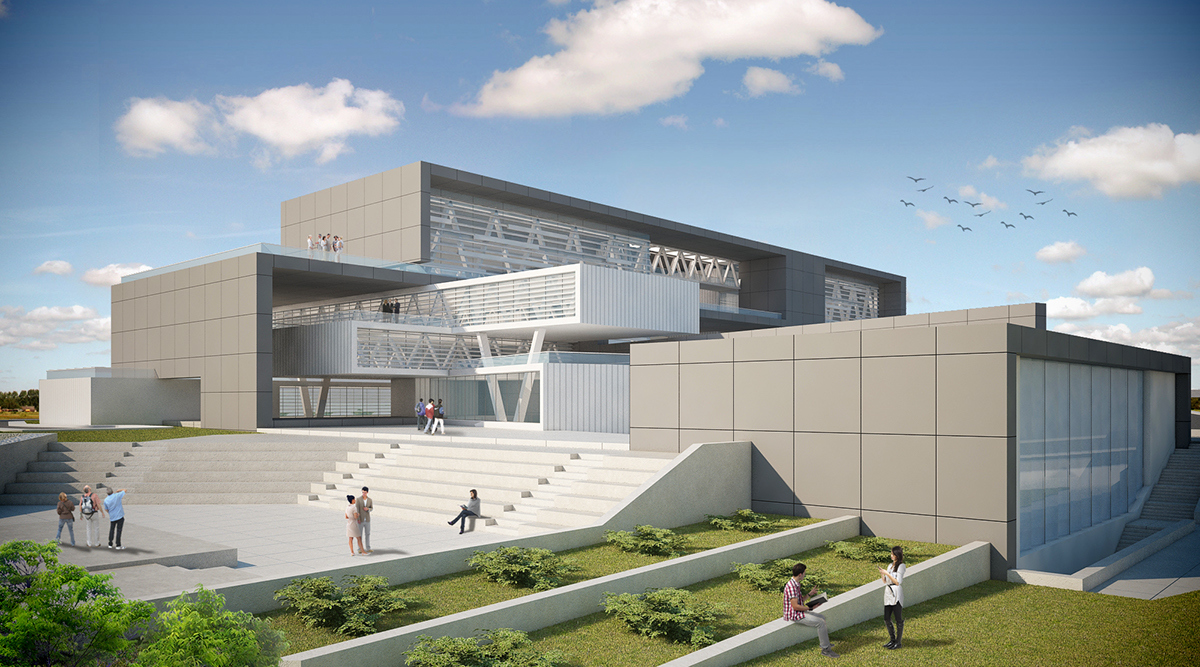There are many various factors to take into account while establishing a school, college, or university. You’re building a facility that supports learning and education in addition to a teaching atmosphere. Although we might not be aware of it, our environment can have a significant impact on our productivity. Library, schools, and universities are excellent design suggestions for schools and colleges to consider one’s future. While studying can be difficult, effort is still required. But, in order to provide a better education, it is essential to have a building equipped with cutting-edge instructional technology that can be used to impart both theoretical and practical information. The most cutting-edge educational facilities with the best building architecture can be found below.
This post will look at eight design recommendations for schools and colleges that you should use when creating a new facility.
1. Utilize Functional Furniture Around the Campus
Schools are frequently densely inhabited places, therefore when selecting furniture for the classrooms and common areas, you want durable, multipurpose pieces. If not, you’ll have to replace everything much sooner than you’d like. For both indoor and outdoor spaces, options like this school dining furniture from Seatable UK are a great choice. Be careful to keep in mind that items will last longer if they are of higher quality.
Both the classrooms and the educational institutions that house them are distinctive in their own right. The measurements must be accurate before you go furniture buying. It will provide you the ability to lessen the likelihood of purchasing furniture that hardly fits in your classroom. You must take into account future predictions of potential class enlargement in addition to the current class space. Along with the specifications, you should also look at the size and simplicity of assembly.
2. Be Smart with Your Lighting Choices
You should include both natural and LED lighting options when selecting the lighting for various spaces in a school or college. Unbelievably, the color of some lights can affect our emotions in several ways. White light with a blue tint stimulates the brain, increasing attentiveness and productivity, according to studies. Although outside light can prevent seasonal sadness and increase our Vitamin D levels. It’s a small thing, yet it has a significant impact on productivity.
3. Take Advantage of Natural Displays
Another excellent recommendation for designers is to make sure a school has enough of greenery and natural resources. Moreover, to aiding in the creation of a tranquil and pleasant environment, certain studies have revealed that pupils who spend more time near plants learn more effectively. While indoor plants are wonderful, it’s also a good idea to add trees and shrubs to the landscaping to provide more shade. This contributes to our environment while making a peaceful environment.
4. Use a Range of Diverse Art Pieces
Filling the walls with distinctive and varied artwork can be a wonderful way to unify a space and excite children. You might even think about hiring some regional artists to design stunning murals. If you need some ideas, look at these striking contemporary school and university designs!
5. Think Like a Young Adult
You should attempt to put yourself in the shoes of young people while developing a location that will be used by them. Even while it would be simpler to stick with simpler designs, experimenting can have a significant impact. Using a variety of hues and patterns can instantly make a space seem livelier and more vibrant. Keep in mind that encouraging learning is the main objective here, and making anything that appears overly clinical may hinder that purpose.
6. Prepare Your Layout with Practicality in Mind
Schools’ common areas and classrooms call for a little more preparation than other business locations. Making the space seem its best is crucial, but you also need to think about how usable it will be. There must be sufficient sitting for pupils in between lessons, desks that are properly spaced, and easy access to select locations for teachers. Try estimating the expected attendance of pupils to help with this so that spaces aren’t packed.
7. Develop Social and Independent Areas
Although you might be preoccupied with creating social spaces that promote relationships and communication, it’s crucial to have locations for independent learners as well. Without the distractions of more populated locations, people can ponder and work between classes in quiet study rooms or reading nooks. This harmony gives students the freedom to decide where they want to be while yet giving them time to unwind. A “No Talking” room is an excellent choice.
8. Don’t Forget to Include Plenty of Signage
Provide plenty of signage—one it’s of the most crucial things that colleges and schools shouldn’t overlook. It can be very challenging to navigate a vast campus when you have new kids, staff, and visitors who need to get around. All relevant classrooms and amenities should be clearly marked with signs. Keep in mind not to overdo it! Confusion might result from having too many signs.
That’s all, then! There you have it—eight design recommendations for colleges and high schools. How do you feel? Would you have anything else to add to this list?




